PCT Class of 2016 Survey: The Gear Guide
Check out the most recent PCT Gear Guide here.
For this past year’s Pacific Crest Trail Thru-hiker Survey, I collected more data than I have any other year (thanks again to everyone who participated).
To make sure we’re getting the most out of this data, I’ve decided to break down the survey results into more detailed posts, including demographics, resupply, trail stats, and this post, gear.
First, let’s review what we went over in the survey results.
NOTE: A list of the different categories I broke hikers into and how they are identified can be found at the end of this post.
The Average PCT Gear List
Based on the survey responses, we can piece together what an “average” Pacific Crest Trail hiker’s gear list looked like for their 2016 thru-hike.
Let’s take a look, shall we?
AVERAGE 2016 PCT THRU-HIKER
Here we’ll take a closer look at the MOST COMMONLY USED GEAR from this year’s PCT class.
Remember, this is the most commonly used gear—simply because something was the most used does not necessarily mean it is automatically the “best” (or even good).
Further down, we look at what gear hikers DID NOT like, so it might be best to read through the entire post before you go crazy with your gear selection.
NOTE: The gear in the charts below is listed in order from most common (at the top) to less common (at the bottom).
MOST POPULAR BACKPACK | ULA Circuit
The ULA Circuit was the most popular pack for Pacific Crest Trail thru-hikers last year. It easily fits the BV500 and other bear canisters and carries up to 35 lbs (16 kg) of gear.

| BACKPACK | PRICE | WEIGHT | LITERS | REC MAX LOAD | ACCESS |
|---|---|---|---|---|---|
| ULA Circuit | $235 | 41 oz / 1.162 kg | 68 | 35 lbs / 16 kg | Top |
| Osprey Exos 58 | $220 | 38.4 oz / 1.089 kg | 58 | 40 lbs / 18 kg | Top |
| ZPacks Arc Blast | $325 | 21 oz / 595 g | 55 | 35 lbs / 16 kg | Top |
| Osprey Atmos 65 AG | $260 | 73.28 oz / 2.077 kg | 65 | 45 lbs / 20.5 kg | Top |
| ULA Catalyst | $260 | 48 oz / 1.361 kg | 75 | 40 lbs / 18 kg | Top |
MOST POPULAR SHELTER | Big Agnes Fly Creek UL2
The Big Agnes Fly Creek UL2 was the most popular shelter for Pacific Crest Trail thru-hikers last year. NOTE: the Fly Creek UL2 has been replaced with the Fly Creek HV UL2 which is designed with steep walls and a vertical door to provide more floor and head space.

| TENT | PRICE | WEIGHT | PACKED | HEIGHT | FLOOR | DOORS |
|---|---|---|---|---|---|---|
| Big Agnes Fly Creek UL2 | $350 | 31 oz. / 879 g | 4 x 19 in | 40 in / 101.6 cm | 28 ft² / 2.6 m² | 1 |
| Big Agnes Copper Spur UL2* | $450 | 44 oz / 1.247 kg | 4 x 19.5 in | 40 in / 101.6 cm | 29 ft² / 2.69 m² | 2 |
| Zpacks Duplex | $600 | 21 oz / 595 g | 8 x 14.5 in | 48 in / 122 cm | 28 ft² / 2.6 m² | 2 |
| Zpacks Hexamid Solo | $475 | 15.4 oz / 437 g | ? | 47 in / 119 cm | 18.6 ft² / 1.73 m² | 1 |
| REI Quarter Dome 1 | $230 | 34 oz / 964 g | 6 x 20 in | 37.5 in / 95 cm | 21.4 ft² / 1.99 m² | 1 |
*The Copper Spur UL2 has been replaced with the Copper Spur HV UL2, which is designed with steep walls and a vertical door to provide more floor and head space.
MOST POPULAR SLEEPING BAG | Zpacks 20°
The Zpacks 20° was the most popular sleeping bag for Pacific Crest Trail thru-hikers last year. However, a lot of hikers complained of this bag not being warm enough (especially in the Sierra). Like I said above, most common does not equal best.

| SLEEPING BAG | PRICE | TEMP | WEIGHT | FILL | FILL WEIGHT |
|---|---|---|---|---|---|
| Zpacks 20° | $415 | 20°F / -7°C | 18.3 oz / 519 g | 900-fill down | 12.1 oz / 343 g |
| ZPacks 10° | $435 | 10°F / -12°C | 21.3 oz / 604 g | 900-fill down | 14.9 oz / 422 g |
| Enlightened Equipment Revelation 20° | $330 | 20°F / -7°C | 18.6 oz / 527 g | 900-fill down | 12.25 oz / 347 g |
| Enlightened Equipment Enigma | $340 | 20°F / -7°C | 17.38 oz / 493 g | 900-fill down | 11.76 oz / 333.4 g |
| Western Mountaineering UltraLite | $500 | 20°F / -7°C | 29 oz / 822 g | 850-fill down | 16 oz / 453.6 g |
MOST POPULAR SLEEPING PAD | Therm-a-Rest NeoAir XLite
The Therm-a-Rest NeoAir XLite was the most popular sleeping pad for Pacific Crest Trail thru-hikers last year. In fact, the Therm-a-Rest brand pretty much dominated the entirety of the sleeping pads reported.

| SLEEPING PAD | PRICE | TYPE | WEIGHT | R-VALUE | PACKED | THICK |
|---|---|---|---|---|---|---|
| Therm-a-Rest NeoAir XLite | $160 | Air pad | 12 oz / 350 g | 3.2 | 9 x 4 in / 23 x 10 cm | 2.5 in / 6.3 cm |
| Therm-a-Rest Z Lite Sol | $45 | Foam | 14 oz / 410 g | 2.6 | 20 x 5 x 5.5 in / 51 x 13 x 14 cm | .75 in / 2 cm |
| Therm-a-Rest NeoAir XTherm | $200 | Air | 15 oz / 430 g | 5.7 | 9 x 4 in / 23 x 10 cm | 2.5 in / 6.3 cm |
| Therm-a-Rest RidgeRest SOlite | $30 | Foam | 14 oz / 400 g | 2.8 | 20 x 8 in / 51 x 20 cm | .625 in / 1.5 cm |
| Sea to Summit UltraLight Insulated | $130 | Air | 15.5 oz / 439 g | 3.3 | 4 x 9 in / 10 x 23 cm | 2 in / 5 cm |
MOST POPULAR STOVE | MSR PocketRocket
The MSR PocketRocket was the most popular stove for Pacific Crest Trail thru-hikers last year. However, 20% of respondents said they went stoveless on the trail (something to keep in mind).

| STOVE | PRICE | TYPE | WEIGHT | DIMENSIONS | INTEGRATED POT | SIMMER CONTROL |
|---|---|---|---|---|---|---|
| MSR PocketRocket | $40 | Canister | 3 oz / 85 g | 4.1 x 2.1 x 2 in | No | Yes |
| Jetboil Flash | $100 | Canister | 15.25 oz / 432 g | 7.1 x 4.5 in | Yes | No |
| Jetboil MiniMo | $135 | Canister | 14 oz / 397 g | 5 x 6 in | Yes | Yes |
| Jetboil Zip | $80 | Canister | 11.75 oz / 333 g | 4.1 x 6.5 in | Yes | No |
| MSR MicroRocket | $60 | Canister | 2.6 oz / 74 oz | 3 x 2 in | No | Yes |
MOST POPULAR WATER TREATMENT | Sawyer Squeeze
The Sawyer Squeeze was the most popular water treatment system for Pacific Crest Trail thru-hikers last year. Remember that you do not need a system that treats for viruses on the PCT (at least that’s what the word in the mountains is).

| WATER TREATMENT | PRICE | WEIGHT | TYPE | MEDIUM | REMOVES | DIMENSIONS |
|---|---|---|---|---|---|---|
| Sawyer Squeeze | $40 | 3 oz / 85 g | Squeeze/Straw | Hollow-fiber membrane | Protozoa and bacteria | 5 x 2 in |
| Sawyer MINI | $25 | 2 oz / 57 g | Squeeze/Straw | Hollow-fiber membrane | Protozoa and bacteria | 1 x 5 in |
| Aquamira | $15 | 3 oz / 85 g | Drops | Chlorine dioxide | Protozoa, bacteria, and viruses | N/A |
| Platypus GravityWorks | $110 | 11.5 oz / 326 g | Gravity | Hollow fibers | Protozoa and bacteria | Filter: 3 x 7.4 in / reservoirs: 19 x 8/13.5 x 7.5 in |
| SteriPEN | $70 | 3 oz / 85 g (no batteries) | Ultraviolet | Ultraviolet light | Protozoa, bacteria, and viruses | 7.3 x 1.7 x 1.7 in |
MOST POPULAR BEAR CANISTER | BearVault BV500
The BearVault BV500 was the most popular Bearn Canister for Pacific Crest Trail thru-hikers last year. Bear canisters must be carried north of Lone Pine, but most hikers begin carrying them at Kennedy Meadows They can stopped being used at Bridgeport (but many hikers loose them in South Lake Tahoe).
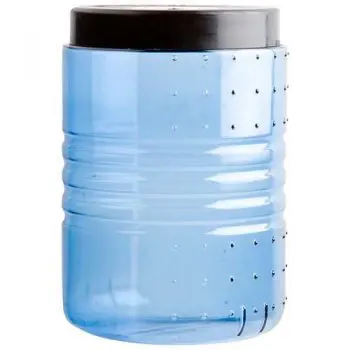
| BEAR CANISTER | PRICE | CAPACITY | WEIGHT | MATERIAL | DIMENSIONS | APPROVED FOR USE ON PCT |
|---|---|---|---|---|---|---|
| BearVault BV500 | $80 | 11.5 L | 41 oz / 1.162 kg | Polycarbonate | 12.7 x 8.7 in | Yes |
| BearVault BV450 | $67 | 7.2 L | 33 oz / 935 g | Polycarbonate | 8.7 x 8.3 in | Yes |
| Berikade Expedition | $350 | 14.7 L | 36 oz / 1.021 kg | Carbon fiber | 14.5 x 9 in | Yes |
| Garcia Bear-Resistant Container | $75 | 10 L | 43 oz / 1.219 kg | ABS polymer | 12 x 8.8 in | Yes |
| Berikade Weekender | $288 | 10.6 L | 31 oz / 879 g | Carbon fiber | 10.5 x 9 in | Yes |
So, if we take the most commonly used items above and throw them into our PCT thru-hiker’s backpack, we come up with a base weight of 6.77 lbs / 3.07 kg (not including the bear canister).
Of course, this is missing many things – including rain gear, a down jacket, a headlamp, extra clothing, and whatever else people throw in their packs. However, it doesn’t get us anywhere close to the AVERAGE STARTING BASE WEIGHT of this year’s thru-hikers: 20.12 lbs / 9.15 kg.
So what was everyone bringing that they didn’t need?
Here are the top things it took hikers the longest to get rid of (and things you may want to think twice about bringing).
- Extra clothing
- Camp shoes
- Umbrella
- Stove
- Solar charger
- Sawyer MINI
- Towel
- Books
And what sort of “extra clothing” were people carrying around in their packs?
- Baselayers
- Extra shirts
- Town clothes
- Sleeping clothes
- Extra socks/underwear
Speaking of base weight and things you don’t actually need to bring on your PCT thru-hike, let’s take a look at the breakdown for some base weights for various groups of hikers.
Certainly most people learned the lesson of “less is more” while on the trail, but it’s also interesting to note the difference in base weights (particularly the starting base weights) for thru-hikers who did and did not finish the trail.
On average, people who COMPLETED THE PCT had a starting base weight that was 3.68 lbs / 1.67 kg lighter than people who DID NOT FINISH.
Obviously, this does not mean that cutting your starting base weight by 3.68 lbs / 1.67 kg will make you finish the trail, but it is interesting to see that there’s a significant difference.
Next, let’s compare the base weights of people who were thru-hiking their first long-distance trail and those who had already done one.
I don’t know about you, but I would say that this information makes an awfully good case for you getting your base weight down.
And know that this does NOT mean that you have to have a crazy sub-five-pound (2.3 kg) base weight to have a successful thru-hike. You don’t even need to have a sub-ten-pound (4.6 kg) base weight. All you need to do is make sure that you’re not overloading yourself with things you don’t need.

Could someone happily and successfully hike the PCT with a thirty-pound (13.5 kg) base weight? Sure. Could everyone? Probably not.
Let’s not forget one of the best resources reported by this year’s PCT class: former thru-hikers. Here we have data from a bunch of former thru-hikers telling us to lighten up our packs.
Think hard and long on what you REALLY need out there on the trail.
And don’t say I didn’t try to warn you when you still decide to bring all that extra weight (because 100%, some of you will ignore this advice and bring a bunch of unnecessary gear anyway).
And one final note: thru-hikers with an ending base weight BELOW THE AVERAGE of 16.2 lbs / 7.36 kg finished the trail on TEN DAYS quicker than those with ending base weights above the average (and ten days in Northern Washington can be a huge difference with approaching fall/winter storms).
The Best and Worst Gear
Until now, we’ve covered the most commonly found gear on the Pacific Crest Trail and attempted to reinforce the idea that you should lighten up your pack (seriously).
Now, we’re going to look at what you should probably think about bringing along as we sift through this class’s FAVORITE GEAR.
WHAT HIKERS LIKED
The most reported piece of gear that thru-hikers loved? The Altra Lone Peak 3.0. What’s that? It’s a shoe.
Shoes are a big problem for a lot of hikers each year, so I suggest that if you’re only going to test ONE PIECE of your gear, make it your shoes (and test them with a fully loaded backpack out on a trail somewhere – not around your living room).
More of this class’s favorite gear items were:
- Osprey Exos 58 (Backpack)
- Therm-a-Rest NeoAir XLite (Sleeping Pad)
- Big Agnes Copper Spur UL 2 (Tent)
- Leki Corklite (Trekking Poles)
- Western Mountaineering UltraLite (Sleeping Bag)
- ULA Circuit (Backpack)
- Buff (It’s a buff)
WHERE TO INVEST
This year’s class spent an AVERAGE OF $1,647.35 (σ = $1,245.86) on their gear before beginning their thru-hikes and went through an average of four pairs of shoes (σ = 1) – that could easily cost $400 (so again, make sure you’re testing your shoes).
- AVERAGE AMOUNT SPENT ON GEAR | $1,647.35 (σ = $1,245.86)
- FINISH – PAIRS OF SHOES USED (AVERAGE) | 4.2 (σ = 1)
- FINISH – AVERAGE AMOUNT SPENT ON ENTIRE HIKE | $6,053.75 (σ = $2,573.66)
- AVERAGE SLEEPING BAG TEMPERATURE RATING | 15°F / -9°C
- AVERAGE BACKPACK SIZE | 60.1 L
I asked hikers which piece of gear they would most like to UPGRADE and came up with the following list:
- Sleeping Bag (Nobody with a Western Mountaineering UltraLite said they would upgrade their sleeping bag.)
- Rain Gear
- Backpack
- Shelter (Nobody with a Big Agnes Copper Spur UL2 said they would upgrade their shelter.)
- Down Jacket
- Sleeping Pad (Nobody with a Therm-a-Rest NeoAir XTherm said they would upgrade their sleeping pad.)
For more on PCT costs, check out How Much Does it Cost to Hike The Pacific Crest Trail?
WHAT HIKERS DID NOT LIKE
By cross-referencing people’s gear with what items they said they would upgrade (and by reading through the gear comments), I tried to get an idea of the least-liked gear out on the trail.
Here’s what I came up with.
NOTE: an appearance here does not necessarily mean that this gear was not liked by other hikers.
- LEAST LIKED BACKPACKS: Osprey Atmos AG 65, ULA Circuit
- LEAST LIKED SLEEPING BAGS: ZPacks 20°, Enlightened Equipment Revelation 20, REI Igneo
- LEAST LIKED SHELTER: MSR Hubba NX 1, Big Agnes Fly Creek UL1
- LEAST LIKED SLEEPING PAD: Therm-a-Rest Z Lite SOL
- LEAST LIKED WATER TREATMENT: Sawyer MINI
And here are a few more stats I managed to harvest from the data mound:
- 62% of hikers who would upgrade their WATER TREATMENT were using a Sawyer MINI.
- 33% of hikers who would upgrade their SLEEPING PAD were using a Therm-a-Rest Z Lite Sol.
- 33% of hikers who would upgrade their SLEEPING BAG were using ZPacks or Enlightened Equipment bags.
- 52% of hikers who would upgrade their SLEEPING BAG were using a bag with a temperature rating of 19°F (-7.2°C) or higher.
THRU-HIKER GEAR COMMENTS
- There was a surprising amount of distaste for ZPacks – particularly their 20-degree bag and backpacks.
- Again, the Sawyer MINI was a much-hated piece of gear. If you’re thinking about bringing it, I would definitely consider sucking it up and bringing that 1 oz / 28 g extra and getting the Sawyer Squeeze.
- A lot of people complained of being cold in 20°F / -6.6°C sleeping bags. If you’re a cold sleeper, then consider a 15°F (-9.4°C) or 10°F (-12.2°C) bag.
- Definitely get yourself some good rain gear for Washington (you’ve been warned).
- Some people loved carrying an umbrella, and others hated it. If you’re thinking about bringing one and you’ve never hiked with an umbrella before, then I would definitely give it a test run.
- Many hikers also complained of small one-person shelters. Be sure you’re not going to be wishing for more space during those three days of thunderstorms.
Lastly, here are some tips from the PCT Class of 2016 to consider before making your final gear selection:
- Being cold at night sucks.
- Good gear is worth the investment.
- Lighter is better (but don’t compromise on comfort).
- Get a 10°F / -12°C bag (not a 20°F / -7°C).
- Get a two-person tent (the weight is worth the space).
- The Sawyer MINI is too slow – get the Squeeze.
And since so many people decided to comment on rain gear, I decided to have a separate section for rain advice.
- Focus on warmth and waterproofing.
- I love having most of my important things in waterproof sacks. That way when it rains all my stuff WILL stay dry. These are things like my tent, sleeping bag, etc. Most things that weren’t in bags were in Ziplocs. Ziplocs gave me peace of mind all the time when it rained.
- Make sure you have rain gear for Washington. Emergency ponchos suck. Waterproof gloves would be good too.
- Needed waterproof, not water resistant, rain gear in Washington.
- Nothing beats the Washington rain, we should all stop pretending.
For more on gear, check out my Ultimate Pacific Crest Trail Packing List or these Pacific Crest Trail Gear Posts.
Pacific Crest Trail Survey Collection
If there is ANYTHING you can think of that would make this information more useful (or any more gear-related cross-referencing you would like to see), then please LEAVE A COMMENT and let me know.
Affiliate Disclosure: This page may contain affiliate links, which means I may receive small commissions for purchases made via these links at no additional cost to you. This helps pay the bills and keep the site up and running. Thank you for your support!

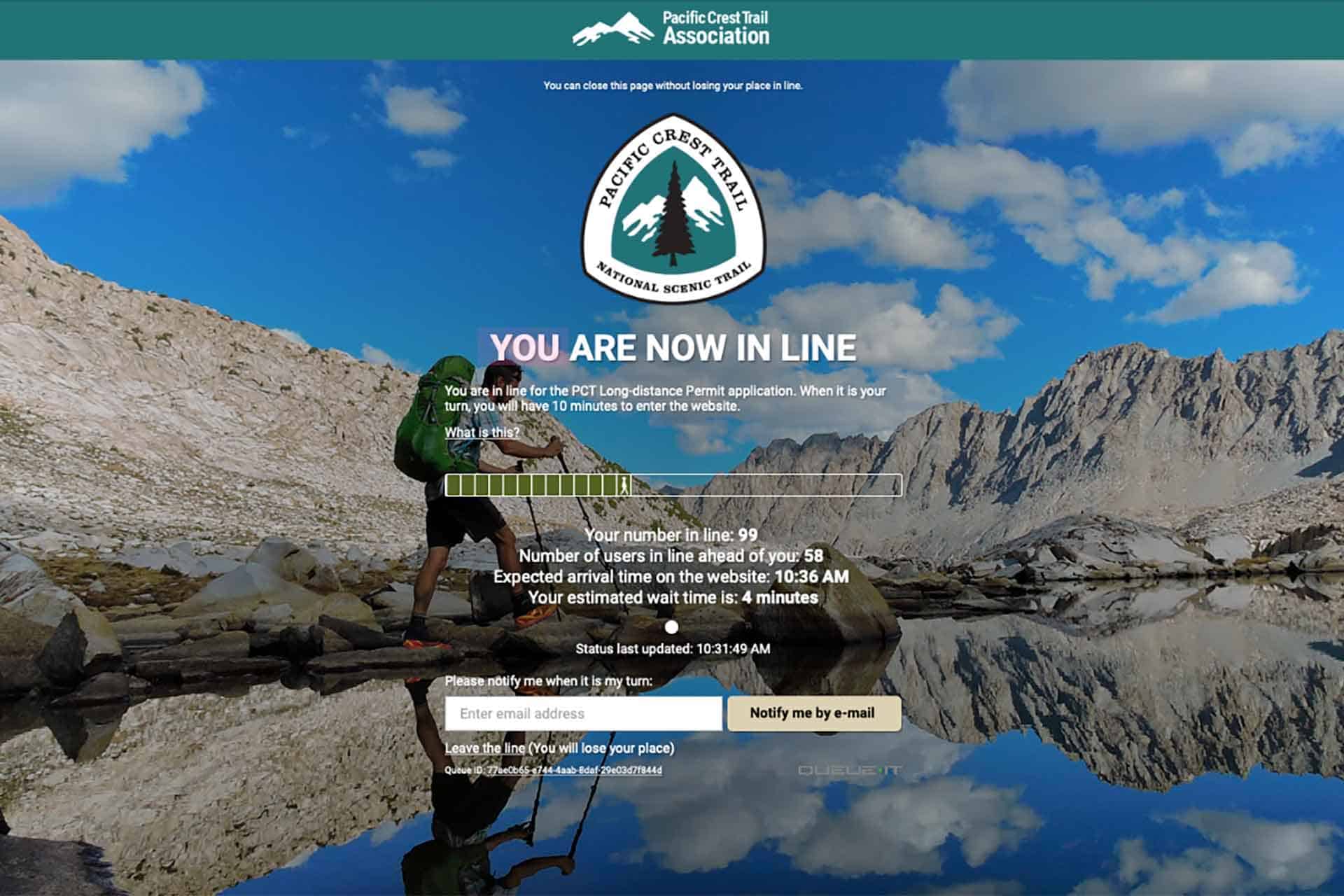
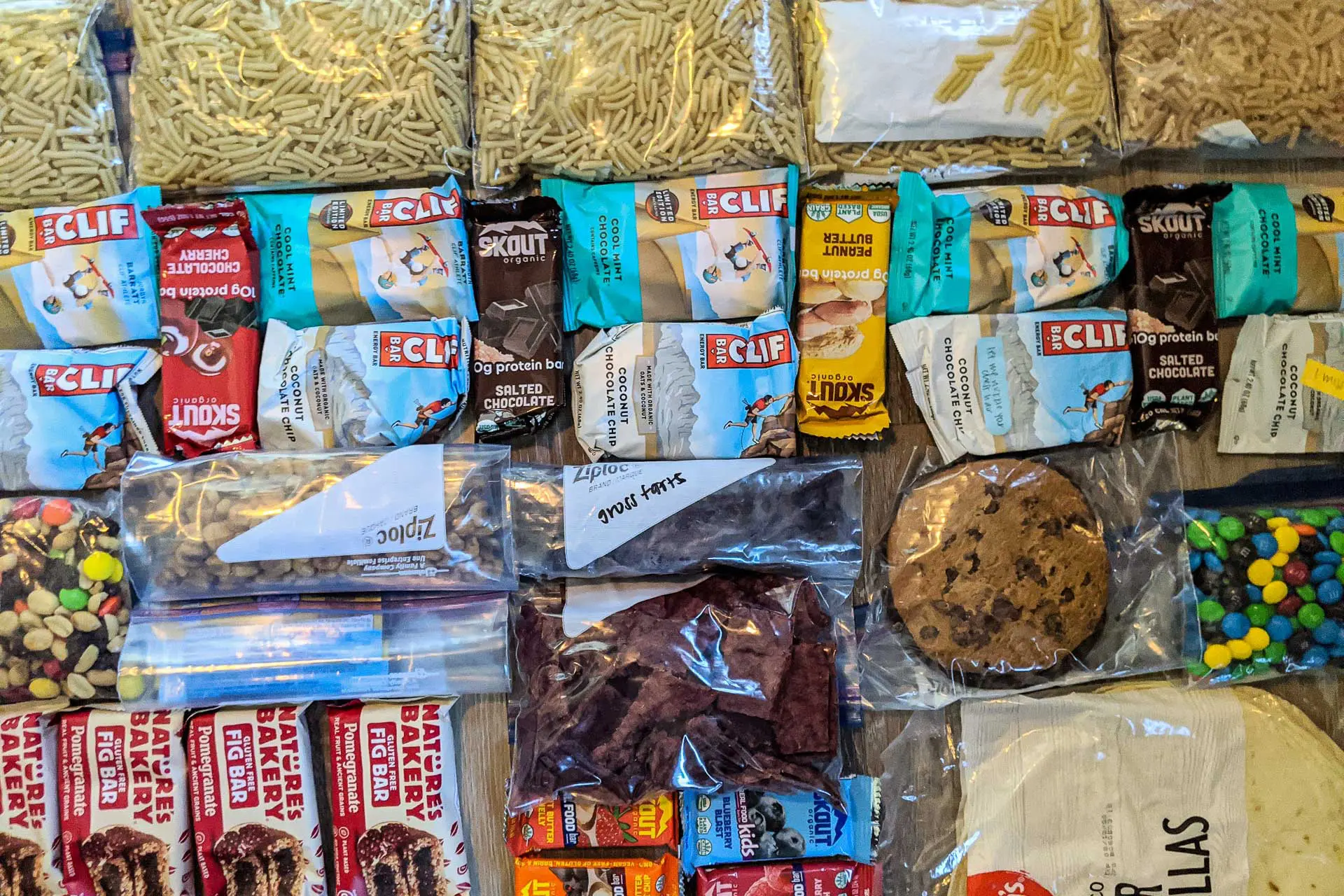


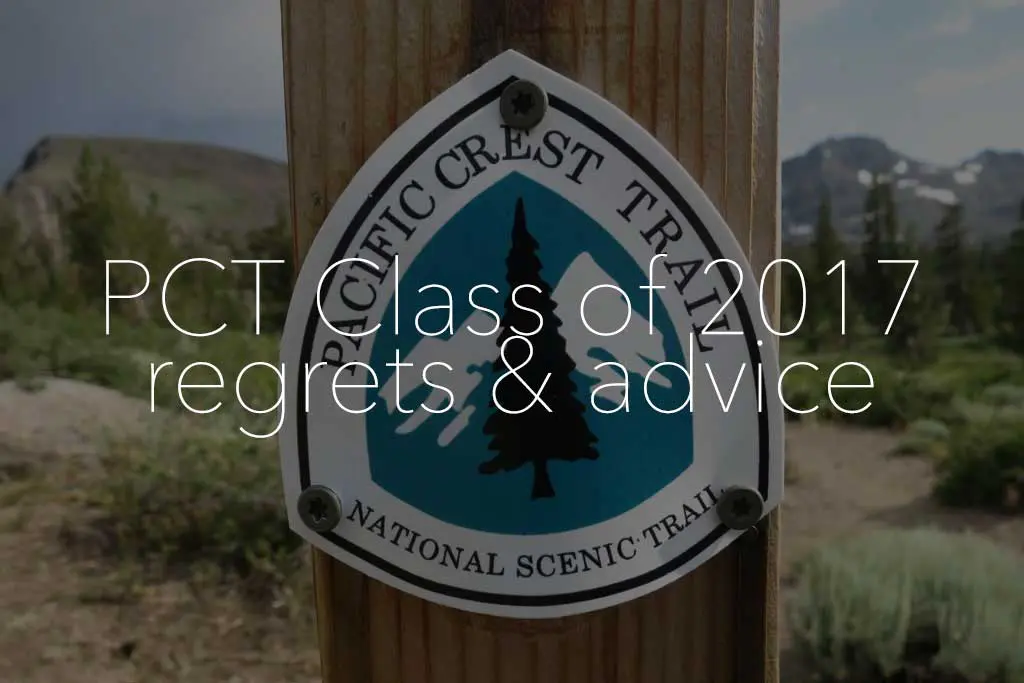
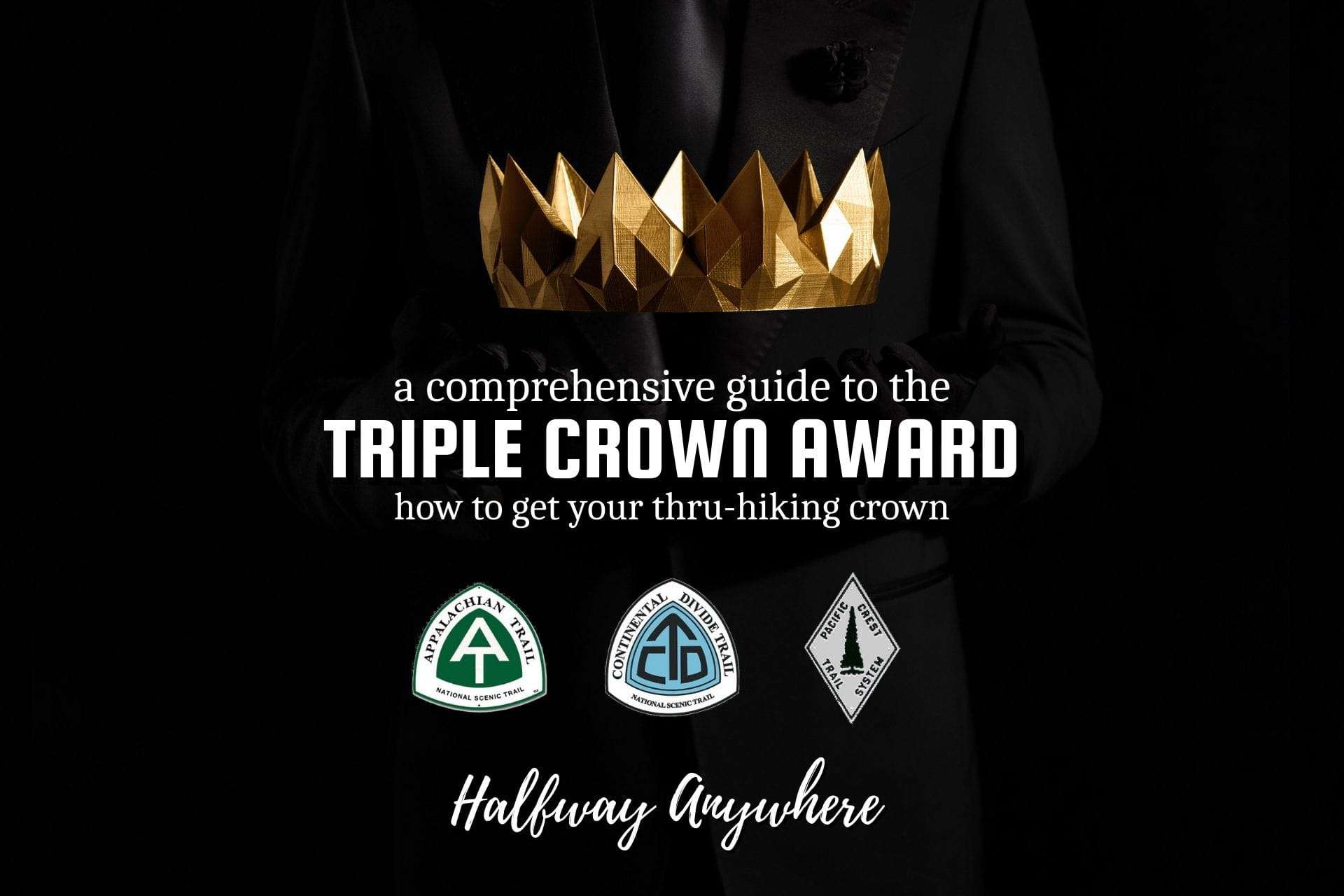
Great article! I am struggling with advice on a bag setup for a PCT section hike next season from Kennedy to Sonora Pass. Given I would not start until mid May and plan to hike at a slower average pace (like multiple nights at nice spots, etc)… I would love some feedback on whether my Nemo Nocturne 30 bag would be enough in the Sierras? It is actually a 23 degree bag, and have goosefeet socks to sleep in as well. Thoughts anyone?
I used a 20-degree NEMO bag in the Sierra last month and I nearly froze (even with a heavy wool base layer). I’m generally quite a warm sleeper.
this is a terrific reference, thank you!
You’re welcome!
Hi there! Do you have data on clothing (i.e. type, how many 2 piece sets, etc…)?
Unfortunately, no. Maybe next year.
Next year/This year I would love to see food added to the survey. Were their brands that were preferred? Pre-packaged/freeze-dried/dehydrated/Gel Packs/DIY food packs? any brands with packaging that couldn’t hold up to the abuse/legendary Washington rain?
A lot of hikers, myself included, like to transfer all their foods into ziploc bags when resupplying (aka bombproof packaging).
You wrote that peoples favorite gear items were the ULA Circuit then you wrote peoples least favorite gear was the ULA Circuit why did some people like it and others not like it?
Why did people not like the Osprey Atmos AG 65, the MSR HUBBA 1 NX was it only because of the size and the Therm-a-Rest Z Lite SOL?
As far as stoves go how many people were using Alcohol stoves?
Just out of curiosity did you ask people about what kind of camera’s they had?
I don’t ask people to be too specific with why they did or didn’t like a certain piece of gear. The ULA Circuit is a popular bag so that’s probably why there’s so much diversity in opinion about it.
I am conducting this year’s survey right now and should have more on the stove situation. Unfortunately, I did not and am not asking about cameras.
Wondering if the issue with sleeping cold is a regional thing. I typically hike and camp in the midwest and a 30 degree bag has been plenty for me and only had one night of being cold in early May with temps below freezing. I have had people from So Cal absolutely freeze in mid summer conditions in the BWCA and wondering how I can even sleep.
Thank you for this great resource! I’m planning on going in 2019 so I have a while to get ready. I would like to know, for future surveys, about which backpacks, sleeping bags and shoes were most favored (or most hated) by women hikers. Thanks again and happy trails!
Sure thing! Will be doing additional breakdowns with this year’s data based on the feedback from last year’s.
Would also like to see this!
Mac, do you have a more in-depth post on rain gear? What did people use, vs what they wish they had? And maybe some tips on how rain gear needs change for the various sections.
I don’t have an in-depth rain gear post, but it’s now on the list!
Your site has definitely been my most trusted source for prepping for the PCT, but I still find myself a little bit hesitant about pulling the trigger on a tent. To me it looks like it would be a choice between a Zpacks duplex (although I’ve noted the distaste for Zpacks you’ve stated above), BA Copper Spur (although it’s the heaviest of the tents I’m looking at and I wonder about it’s toughness in storms), Yama Mountain Cirriform silnylon bottom/ceuben top (only one door and I wonder about ventilation and being comfortable in this tent while waiting out storms) In general, I would say my top priority is that my tent be bomb proof and tough enough to still have plenty of life after a complete PCT hike. Any suggestions? : )
Honestly, I’m looking at the ZPacks Duplex now, but Big Agnes is also coming out with the Copper Spur UL2 Platinum (36 oz) which looks tempting as well. As far as bomb-proof goes, I would probably go with the Big Agnes, but it depends on whether or not you want to carry that extra weight. We’ll see what I end up bringing on the CDT :)
don’t discount the Duplex in a storm, set up right its very strong and wind proof, super awesome 3 season tent, recommend it to anyone, mine has been 100% on PCT and here in Australia
Congratulations, this is an outstanding resource and valuable for all hiking.
I was wondering if there was any information, or if anyone can comment, on why the Zpaks 20 degree sleeping bag was the most popular but yet one item that was least liked.
I had planned to upgrade to this bag, now I am not so sure.
Thanks
I think it ended up being not as warm as people thought it would be.
Thanks Halfway,
That helps the decision process.
Cheers. Teribus
This is awesome, thanks so much!
You’re welcome!
What is the main reason for 2 person tents? Somewhere to put your bag? Where do you put it in a UL1? Outside your tent or crammed inside? Also I love your website Mac, it’s been a huge help. Good man
When I used a one-person tent and it was raining, my pack went in me vestibule (would be too cramped with it inside). For me it’s just really nice to have that extra space in a two-person shelter – especially when you’re waiting out the storms.
Thank you so much Mac for all the work you have put into this. Your website has been one of the best sources to plan my hike. It has helped me deciding which things I need and what to buy (and what not to buy for that matter!). I also love your writing style and your sense of humor. Some of your posts (eg. the “fear” one) I have read several times and forwarded to many people. Yes, I am a big fan of yours! :) – Keep it up! Best regards from Switzerland! Heidi :)
Thanks, Heidi! Best of luck on getting your gear prepped for the upcoming adventure.
Thanks for posting this Mac – so helpful! I’m prepping for PCT 2017 and wanted to see if anyone has any experience with the Katabatic Gear Palisade 30 down quilt on the PCT. I’ve already got it and have used it before heaps but not in cold conditions. I’m worried it could be too light so would be really keen for people’s thoughts. Is a particular section colder at night? As I already have it, I was thinking about starting with it but ordering a warmer bag along the way if I am cold..
i find the palisade to be perfect for the PCT. but everyone is different in their sleeping warmth.